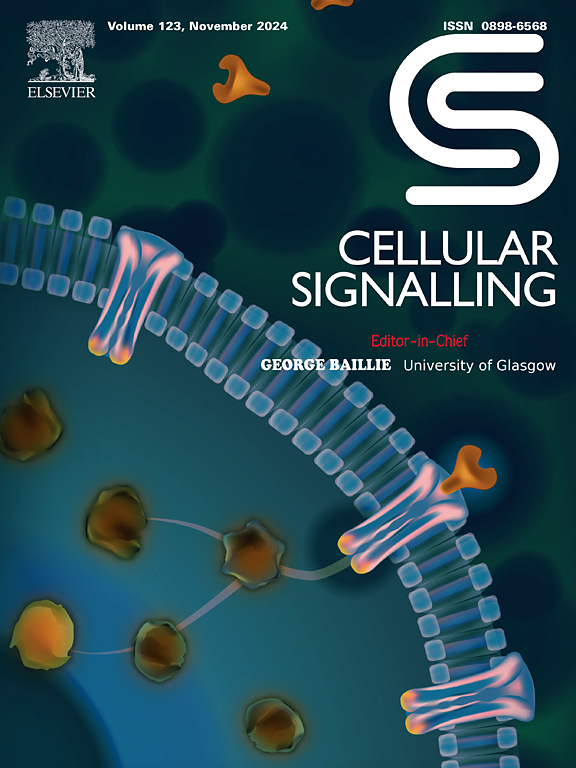The transcription factor BMAL1 inhibits endothelial cell apoptosis by targeting STAT6 to repress its expression
IF 4.4
2区 生物学
Q2 CELL BIOLOGY
引用次数: 0
Abstract
Corneal transparency is critical for optimal visual function, and corneal neovascularization represents the primary cause of visual impairment globally. Recent studies have identified the transcription factor BMAL1 as a significant regulator of angiogenesis. However, its specific role and underlying mechanisms in endothelial cell apoptosis remain inadequately understood. This study seeks to elucidate the role and underlying mechanisms of BMAL1 in endothelial cell apoptosis by employing genetic modification, alkali-burned mouse corneal neovascularization models, lentiviral transfection, proteomic analysis, and other complementary methodologies. Our results showed that BMAL1 expression is significantly elevated in corneal neovascularization induced by alkali burn and removal of Bmal1 in endothelial cells resulted in the suppression of corneal neovascularization in alkali burn mouse models. In vivo experiments have demonstrated that the knockout of Bmal1 in endothelial cells leads to an increase in endothelial cell apoptosis. Complementary in vitro studies revealed that overexpression of BMAL1 in endothelial cells inhibits apoptosis, while knockdown of BMAL1 promotes apoptosis. Proteomic analysis identified STAT6 as a downstream target of BMAL1 involved in the regulation of endothelial cell apoptosis. Further cell salvage experiments confirmed that BMAL1 modulates endothelial cell apoptosis through the regulation of STAT6 expression. Finally, the results of dual-luciferase reporter assay demonstrated that BMAL1 exerts transcriptional repressive effects on the promoter bound by STAT6. This study elucidates the novel role and mechanism of BMAL1 in the regulation of angiogenesis and endothelial cell apoptosis, thereby identifying a potential therapeutic target for the treatment of vascular diseases such as corneal neovascularization.

转录因子BMAL1通过靶向STAT6抑制其表达来抑制内皮细胞凋亡
角膜透明是最佳视觉功能的关键,角膜新生血管是全球视力损害的主要原因。最近的研究已经确定转录因子BMAL1是血管生成的重要调节因子。然而,其在内皮细胞凋亡中的具体作用和潜在机制尚不清楚。本研究旨在通过基因修饰、碱烧伤小鼠角膜新生血管模型、慢病毒转染、蛋白质组学分析和其他互补方法,阐明BMAL1在内皮细胞凋亡中的作用和潜在机制。我们的研究结果表明,碱烧伤诱导的角膜新生血管中BMAL1的表达显著升高,在碱烧伤小鼠模型中内皮细胞中去除BMAL1导致角膜新生血管受到抑制。体内实验表明,敲除内皮细胞中的Bmal1可导致内皮细胞凋亡增加。补充的体外研究表明,内皮细胞中BMAL1过表达可抑制细胞凋亡,而BMAL1敲低可促进细胞凋亡。蛋白质组学分析发现STAT6是BMAL1的下游靶点,参与内皮细胞凋亡的调控。进一步的细胞挽救实验证实BMAL1通过调控STAT6的表达来调节内皮细胞凋亡。最后,双荧光素酶报告子实验结果表明,BMAL1对STAT6结合的启动子具有转录抑制作用。本研究阐明了BMAL1在调节血管生成和内皮细胞凋亡中的新作用和机制,从而为角膜新生血管等血管疾病的治疗找到了潜在的治疗靶点。
本文章由计算机程序翻译,如有差异,请以英文原文为准。
求助全文
约1分钟内获得全文
求助全文
来源期刊

Cellular signalling
生物-细胞生物学
CiteScore
8.40
自引率
0.00%
发文量
250
审稿时长
27 days
期刊介绍:
Cellular Signalling publishes original research describing fundamental and clinical findings on the mechanisms, actions and structural components of cellular signalling systems in vitro and in vivo.
Cellular Signalling aims at full length research papers defining signalling systems ranging from microorganisms to cells, tissues and higher organisms.
 求助内容:
求助内容: 应助结果提醒方式:
应助结果提醒方式:


